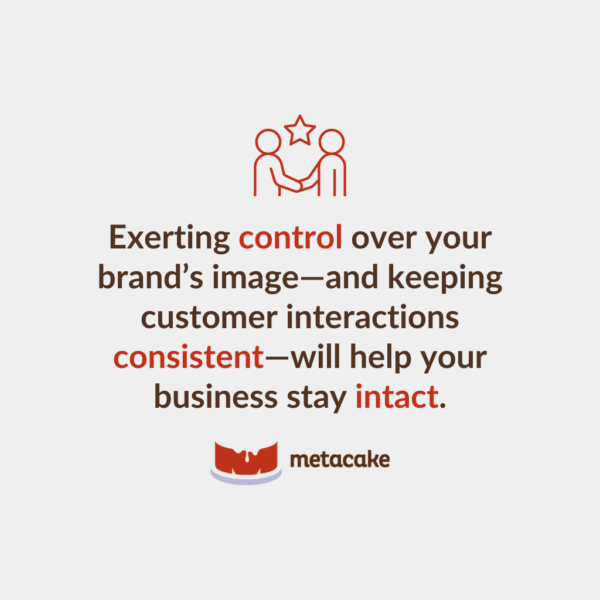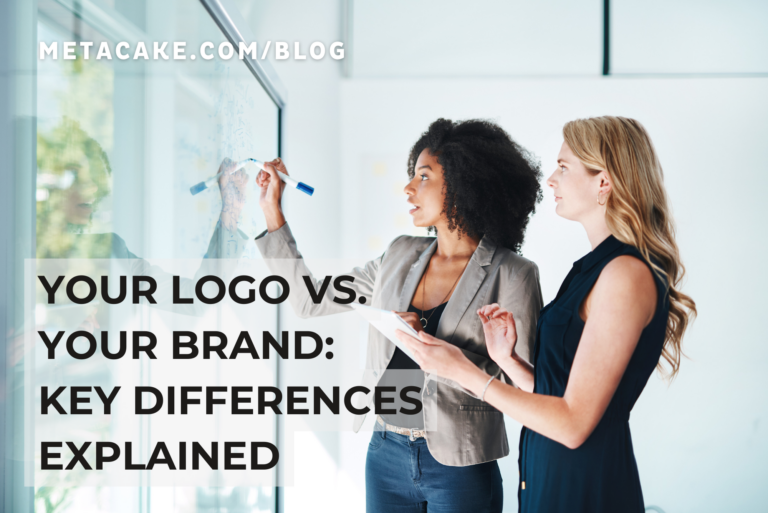A logo is an iconic representation of your brand name. While it should be consistent with your brand, it’s important to remember that your logo isn’t actually your brand.
Your brand is the emotional connection you want people to feel when they interact with your company.
So, logo vs. brand: which comes first?
Logo vs. Brand: Which Is First?
Since a logo is a representation of your brand, your brand must come first. In fact, your brand exists whether you’ve defined it or not. Just by virtue of the public engaging with your company’s products or services — by simply doing business — you’ve created a brand in the world.
Successful owners know this and are intentional and strategic with how they develop their brands.
Talk is cheap, especially now in the age of ubiquitous internet and social media; the world judges you whether you choose to participate in the conversation or not. Smart money says to proudly speak up — take the reins and define your brand on your terms.
It’s your story; you’re the best one to tell it.

Keys to a Great Brand
A strong brand can wear many hats. The important thing is to define what you represent, your brand guidelines, and your core mission, and to express and embody these values using every available channel. Living out your values and mission authentically is what shapes a great brand.
Define your brand guidelines and make sure to provide your audience with a consistent experience that closely adheres to these guidelines across all touch points.
Learn more about what your brand is and why you should care here.
Keys to a Great Logo
Your logo is one of the most obvious, visually iconic representations of your brand (your name being another).
Your logo design should align with your brand values and the feelings — the emotional connection, or “lovemark” — you want to generate in your audience. Just as you wouldn’t use a hard rock, Metallica-style font when designing a preschool’s logo, you must carefully consider how visual elements will affect the public’s conscious and unconscious minds.
Great logo designs are also simple.
Don’t try to represent more than one or two concepts within your logo. Many people are tempted to cram as much as possible into their logo design, using the t in their name to represent one thing and the dot over the i to represent another.
It’s better to go with a simple mark. Make sure it looks good in black and white before introducing colors into the mix.
Finally, design several logo variations for use in different places. For example, in addition to your full horizontal logo, design a vertical version, an iconic version, and a square to be used on social media sites.
If you don’t intentionally define these representations, others will do it for you, so consider the different use cases of your logo from the beginning.
How Customers Interact With Your Brand and Logo
You don’t know where an audience member and potential customer will interact with your logo or brand first, and you can’t control this. They may see your logo while driving, hear your brand name from a friend, interact with your product in a store, or encounter marketing communications while browsing online.
The way your organization appears in public should mirror what you want your brand to represent across all channels and touch points (your logo, product, service, messaging, website, mobile app, customer service representatives, etc.) — because you only get one chance to make a first impression.
And after the foundation hardens, your brand must be positioned for years to come. And don’t allow your brand image to be sabotaged at any point in your customer’s journey.
For example, we were doing work with a retail company that had an incredible product and an incredible brand, but they decided to partner with a low-quality delivery company. The last interaction the customers had with the brand left a sour taste in their mouths, damaging their feelings toward the company and, therefore, damaging their brand.
Logo vs. Brand: Final Thoughts
When taking control and getting intentional with your business’s image, it’s important to distinguish logo vs. brand, which are too often conflated. Your logo is an important yet relatively small component of your overall brand. Your brand is everything about your company and what it represents.
Clearly defining your brand and taking steps to ensure consistency across the customer experience will give your business a solid base from which to grow and develop a loyal following of enthusiastic brand fans.
